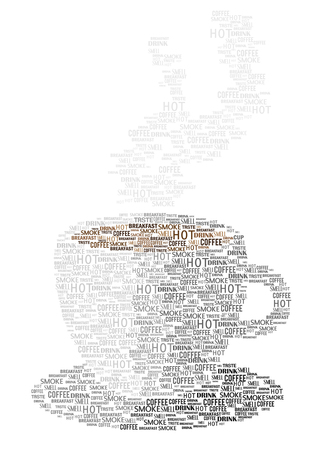Introduction to Australian Coffee Culture
When most people think of world-renowned coffee cultures, places like Italy or Seattle might come to mind. But Australia has quietly brewed its own unique and passionate relationship with coffee, one that has become a defining part of everyday life for millions. In cities like Melbourne and Sydney, grabbing a cup of coffee isn’t just a caffeine fix—it’s a daily ritual, a social experience, and an art form.
Australia’s love affair with coffee didn’t happen overnight. Over decades, the country developed a distinctive coffee culture that stands apart from other coffee-loving nations. Unlike the fast-paced grab-and-go style common in the U.S., or the espresso-at-the-bar tradition in Italy, Australians take their time with coffee. Cafés are community hubs where people connect, relax, and enjoy quality brews prepared by highly skilled baristas.
The Rise of Espresso Down Under
Espresso is at the heart of Australian coffee culture. Introduced by post-World War II European immigrants—particularly Italians and Greeks—espresso quickly became the foundation of café menus across the country. This laid the groundwork for Australia’s now-famous espresso-based drinks like flat whites, long blacks, and piccolos.
Popular Australian Coffee Drinks
| Drink | Description |
|---|---|
| Flat White | A shot of espresso topped with velvety steamed milk; similar to a latte but with less foam and more intense coffee flavor. |
| Long Black | Hot water topped with a double shot of espresso; similar to an Americano but stronger and richer. |
| Piccolo Latte | A mini latte served in a small glass; made with ristretto and steamed milk. |
Coffee as a Daily Ritual
In Australia, coffee isn’t just about taste—it’s about lifestyle. Morning routines often revolve around visiting a local café rather than brewing at home. Many Australians have their go-to barista who knows exactly how they like their drink. It’s this level of personalization and consistency that helps explain why international chains like Starbucks have struggled to gain traction in Australia.
The Local Café Experience
Unlike chain-dominated coffee scenes elsewhere, Australias cafés are largely independent and often focus on quality over quantity. Baristas take pride in their craft, from perfecting latte art to sourcing ethically grown beans. This emphasis on craftsmanship has helped raise the standard for what “good coffee” means—and it shows in every cup.
This rich culture didn’t emerge by accident. It was shaped by immigration patterns, urban lifestyles, and a national appreciation for quality food and drink. As we continue our deep dive into Australia’s coffee origins, we’ll uncover how historical events, global influences, and homegrown creativity all played a role in building one of the most respected coffee cultures in the world.
2. The Birth of Espresso Down Under
Australia’s love affair with espresso didn’t start overnight—it was sparked by a wave of change that swept across the country after World War II. During this time, thousands of immigrants from Southern Europe, particularly Italy and Greece, made their way to Australia in search of a better life. Along with their hopes and dreams, they brought something that would forever change the nations coffee scene: espresso machines and a rich café culture.
The Post-War Immigration Boom
Following the devastation of WWII, Australia opened its doors to immigrants under a new policy aimed at boosting the population and workforce. Between the late 1940s and 1960s, Italian and Greek communities grew rapidly in cities like Melbourne and Sydney. These new Australians brought not only culinary traditions but also a deep-rooted appreciation for social coffee drinking.
Key Immigration Stats (1945–1970)
| Country | Estimated Immigrants |
|---|---|
| Italy | Over 300,000 |
| Greece | Over 160,000 |
This influx of Southern Europeans set the stage for the rise of espresso culture across Australia.
The Rise of the Espresso Machine
Before this wave of immigration, coffee in Australia was mostly instant or percolated—far from what we know today. But Italians introduced lever-operated espresso machines that produced rich, full-bodied shots topped with crema. These machines quickly became staples in newly opened European-style cafés.
What Made Espresso So Different?
| Coffee Style | Preparation Method | Taste Profile |
|---|---|---|
| Instant Coffee | Dried granules mixed with hot water | Mild, often bitter |
| Percolated Coffee | Boiled water cycles through grounds repeatedly | Strong, sometimes over-extracted |
| Espresso | High-pressure extraction through fine grounds | Bold, rich, smooth crema on top |
The arrival of espresso wasn’t just about flavor—it introduced a whole new way of experiencing coffee. It became social, stylish, and even a bit luxurious.
Café Culture Takes Root
Soon enough, small family-run cafés started popping up in inner-city neighborhoods. These spots weren’t just places to grab a quick drink—they were community hubs where people gathered to talk, relax, and enjoy life. This laid-back yet vibrant café culture became uniquely Australian over time.
A Snapshot of Early Aussie Espresso Bars:
- Melbournes Lygon Street became known as “Little Italy,” filled with espresso bars and trattorias.
- Sydneys Norton Street mirrored this growth with bustling Italian cafés lining the sidewalks.
The influence of these immigrant communities transformed how Australians drank coffee—and more importantly—how they connected with each other over it.

3. The Rise of the Independent Café Scene
Australia’s coffee culture didn’t bloom overnight—it was nurtured over decades by a growing number of independent cafés that prioritized quality over quantity. Unlike the fast-paced, grab-and-go coffee culture in some parts of the world, Australians embraced a slower, more thoughtful approach. This shift began to take hold in the 1980s and 1990s, as passionate baristas and small business owners started opening specialty coffee shops that focused on craftsmanship and community.
The Shift from Mass-Market to Artisan
Before independent cafés gained popularity, instant coffee was common in Australian households, and espresso machines were largely found in Italian family-run establishments. But as global travel increased and Australians became more exposed to European café culture—especially in cities like Melbourne and Sydney—a wave of change swept through the local coffee scene.
These small cafés weren’t just selling coffee—they were creating experiences. Customers could watch their drinks being made, chat with knowledgeable baristas, and enjoy a sense of connection that large chain stores often lacked. These cafés also became testing grounds for new brewing methods, single-origin beans, and latte art.
Key Traits of Australia’s Independent Cafés
| Feature | Description |
|---|---|
| Focus on Quality | Freshly roasted beans, skilled baristas, and precise brewing techniques. |
| Local Sourcing | Partnerships with nearby roasters and sustainable suppliers. |
| Community-Oriented Spaces | Cafés designed for conversation, work, or relaxation—not just coffee runs. |
| Innovation & Experimentation | Offering pour-overs, cold brews, alternative milks, and creative flavor profiles. |
The Melbourne Effect
If there’s one city that symbolizes Australia’s independent coffee revolution, it’s Melbourne. Widely regarded as the country’s coffee capital, Melbourne played a major role in shaping national standards for excellence in espresso making. Laneway cafés popped up throughout the city offering cozy atmospheres and expertly crafted flat whites—a drink that has since become synonymous with Australian coffee culture.
A Cultural Movement Fueled by Passion
The rise of these independent cafés wasn’t just about better coffee—it was about redefining how Australians engaged with their daily brew. This hands-on approach emphasized education, transparency, and a deep respect for every step in the coffee-making process—from farm to cup. And it laid the groundwork for Australias reputation today as one of the most sophisticated coffee markets in the world.
4. The Flat White Phenomenon
When it comes to iconic Australian coffee creations, the flat white stands tall—and smooth. This creamy, espresso-based drink was born Down Under in the 1980s and has since become a global coffee shop staple, especially across the United States.
What Exactly Is a Flat White?
A flat white is made with a double shot of espresso (or ristretto) and topped with steamed milk that’s velvety and smooth—not frothy like a cappuccino or airy like a latte. What makes it stand out is the microfoam: milk steamed to a silky texture that blends seamlessly with the espresso, creating a rich and balanced cup.
Flat White vs. Other Espresso Drinks
To understand why the flat white gained popularity, its helpful to compare it with other common espresso drinks:
| Drink | Espresso | Milk Texture | Milk-to-Coffee Ratio |
|---|---|---|---|
| Flat White | Double shot (usually ristretto) | Smooth microfoam | Low milk, high coffee flavor |
| Latte | Single or double shot | Light foam on top | More milk, milder coffee taste |
| Cappuccino | Single or double shot | Thick foam on top | Equal parts espresso, steamed milk, and foam |
The Origins: Australia or New Zealand?
The exact birthplace of the flat white has been debated for decades. Both Australia and New Zealand claim to have invented it during the 1980s. While there’s no definitive answer, many credit Sydney’s café scene for popularizing the drink and refining its signature texture and balance.
The Flat White Goes Global
The rise of specialty coffee culture helped the flat white make its way into international markets. In 2015, Starbucks added the flat white to its U.S. menu—a major sign that this Aussie-born beverage had hit mainstream America. Today, you’ll find it served in independent cafés and major chains alike across cities from New York to Los Angeles.
Why Americans Love It
- Bolder coffee flavor than a latte but smoother than a cappuccino
- A perfect balance of richness without being overly milky
- An Instagram-worthy pour thanks to expert latte art techniques
Cultural Impact in the U.S.
The flat white didn’t just introduce Americans to a new drink—it brought along an appreciation for Australian-style café culture: minimalistic interiors, quality beans, precision brewing methods, and an emphasis on community gathering spaces. Its not just about caffeine; its about experience.
5. Australian Influence on American Coffee Trends
Australia’s coffee culture has quietly but powerfully made its mark on the American café scene, especially through the rise of the third-wave coffee movement. While Australia may not be the birthplace of espresso, it has certainly perfected it in its own way—emphasizing quality, skill, and a deep respect for coffee as a craft. This Aussie perspective has found a warm welcome in the U.S., reshaping how Americans experience their daily cup.
The Aussie Third-Wave Philosophy
At the heart of Australian coffee culture is a focus on artisanal methods and high-quality beans. This philosophy aligns perfectly with the third-wave movement that took hold in the U.S. during the early 2000s. Australian baristas brought with them not only advanced brewing techniques but also a new way of thinking about coffee—from bean to cup.
Key Influences from Down Under
| Aussie Element | Impact on U.S. Coffee Culture |
|---|---|
| Flat White | Popularized across major American chains like Starbucks, offering a smoother alternative to lattes. |
| Barista Craftsmanship | Greater emphasis on latte art, milk texture, and precision espresso extraction. |
| Café Aesthetics | Sleek, minimalist interiors with an emphasis on natural light and communal seating. |
| Sourcing Transparency | A push toward ethical sourcing and direct trade relationships with coffee farmers. |
Cafés That Brought the Aussie Vibe Stateside
Coffee shops like Bluestone Lane (New York), Two Hands (Los Angeles), and Proud Mary (Portland) are just a few examples of Australian-founded or inspired cafés that have become staples in American cities. These places often serve as more than just a caffeine stop—theyre lifestyle hubs where quality, design, and community all come together.
The Rise of the Flat White
No conversation about Australian influence would be complete without mentioning the flat white. Originating from Australia (or New Zealand—depending on who you ask), this espresso-based drink made with velvety microfoam has become a menu mainstay in cafés across America. Its popularity helped introduce many Americans to nuanced espresso flavors without overwhelming milk ratios.
The Barista as Artisan
Australian-trained baristas often approach their craft with intense attention to detail—something that has raised expectations for coffee service in American cafés. From weighing shots to perfecting pour-over timing, these professionals have helped elevate barista work to an artisan level in the States.
The bottom line? Aussie coffee culture didn’t just cross oceans—it reshaped expectations. Whether its through better beans, better brews, or simply better vibes, America’s modern coffee scene owes more than a few nods to its friends down under.
6. Conclusion: Australia’s Legacy in the Global Coffee Scene
Australia may be far from the birthplace of espresso, but its influence on modern coffee culture is hard to miss. What began as a local response to post-war European immigration has evolved into a global trendsetter for café experiences and espresso-based drinks. The Aussie coffee scene didn’t just adopt espresso—it reimagined it.
Take the flat white, for example. Born in Australia (though some Kiwis might disagree), this creamy, velvety drink has become a staple in cafés from New York to Los Angeles. But Australias contribution isn’t limited to individual drinks—its about how coffee is experienced. Australian cafés focus on quality beans, skilled baristas, and welcoming environments that blend casual vibes with serious attention to flavor.
Here’s how Australia’s coffee legacy stacks up globally:
| Influence | Description | Global Impact |
|---|---|---|
| Flat White | A smooth espresso drink with steamed milk and microfoam | Adopted by major chains like Starbucks; now a menu staple worldwide |
| Café Culture | Focus on independent cafés, brunch menus, and high-quality service | Inspired specialty coffee scenes in the U.S., UK, and Asia |
| Third-Wave Coffee Movement | Emphasis on origin, brewing methods, and barista craftsmanship | Helped shift global focus toward sustainability and bean transparency |
As American coffee lovers continue exploring beyond drip brews and flavored lattes, the Aussie approach offers a fresh perspective: quality over quantity, experience over convenience. This influence is shaping new generations of baristas and café owners who prioritize craftsmanship and community.
Looking ahead, Australia’s espresso roots could guide future innovations—from sustainable farming practices to tech-driven brewing techniques—all while keeping the heart of great coffee intact: connection, care, and creativity.


